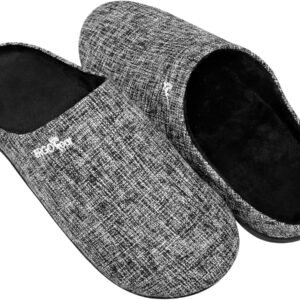Choosing a used car can be a daunting task, but with the right knowledge and approach, you can make a smart and satisfying purchase. This guide will walk you through the essential steps and considerations to ensure you select a used car that meets your needs, fits your budget, and offers long-term reliability. Whether you’re a first-time buyer or a seasoned car enthusiast, this article will provide you with the tools and insights you need to make an informed decision.
Understanding Your Needs and Budget
Before you start browsing used cars, it’s crucial to have a clear understanding of your needs and budget. Here are some key questions to consider:
What is Your Budget?
Set a Realistic Budget: Determine how much you can afford to spend on a used car. Remember to include additional costs such as taxes, registration, insurance, and potential repairs.
Financing Options: Explore financing options, such as loans or leases, to see if they can help you afford a better car within your budget.
What Are Your Transportation Needs?
Daily Commute: Consider the distance and type of your daily commute. If you have a long commute, you might prioritize fuel efficiency.
Family Size: If you have a family, you may need a car with more seating and cargo space.
Lifestyle: Think about your hobbies and lifestyle. Do you need a car that can handle off-road conditions or one that’s suitable for city driving?
What Features Do You Want?
Must-Have Features: Identify the features that are non-negotiable for you, such as air conditioning, Bluetooth connectivity, or a specific type of transmission.
Nice-to-Have Features: List features that would be nice to have but are not essential, such as heated seats or a sunroof.
Researching Used Cars
Once you have a clear idea of your needs and budget, it’s time to start researching used cars. Here’s how to approach your research:
Identifying Suitable Models
Make and Model: Research different makes and models that fit your criteria. Look for cars known for their reliability and value retention.
Year Range: Decide on a year range that aligns with your budget and preferences. Newer models may offer more advanced features but can be more expensive.
Gathering Information
Online Resources: Use websites like Kelley Blue Book, Edmunds, and Consumer Reports to gather information on used car values, reliability ratings, and owner reviews.
Manufacturer Websites: Visit manufacturer websites to learn about the features and specifications of different models.
Forums and Communities: Join car enthusiast forums and communities to gather insights from other buyers and owners.
Comparing Options
Create a Shortlist: Narrow down your options to a shortlist of models that meet your criteria.
Comparison Table: Use the following table to compare key features and specifications of the cars on your shortlist.
| Model | Year Range | Price Range | Fuel Efficiency (MPG) |
|---|---|---|---|
| Toyota Corolla | 2015-2020 | $10,000-$15,000 | 28-32 City / 35-40 Hwy |
| Honda Civic | 2015-2020 | $12,000-$17,000 | 27-31 City / 38-42 Hwy |
| Ford Focus | 2015-2018 | $8,000-$12,000 | 26-27 City / 36-38 Hwy |
| Subaru Impreza | 2015-2020 | $13,000-$18,000 | 25-28 City / 33-36 Hwy |
| Mazda3 | 2015-2020 | $11,000-$16,000 | 27-29 City / 37-40 Hwy |
Inspecting and Evaluating Used Cars
Once you’ve narrowed down your options, it’s time to start inspecting and evaluating used cars. Here’s how to approach this crucial step:
Finding Used Cars for Sale
Dealerships: Visit local dealerships that specialize in used cars. They often have a wide selection and may offer certified pre-owned vehicles.
Private Sellers: Look for used cars for sale by private owners on websites like Craigslist, Facebook Marketplace, and Autotrader.
Auctions: Consider attending car auctions, but be aware that you may need to do more research and inspection due to the nature of auctions.
Inspecting the Car
Exterior Inspection: Look for signs of rust, dents, scratches, and mismatched paint. Check the tires for wear and tear.
Interior Inspection: Examine the upholstery, dashboard, and controls for signs of wear and damage. Test all the features, such as the air conditioning, radio, and windows.
Under the Hood: Check the engine for leaks, corrosion, and wear. Look at the oil and fluid levels.
Test Drive: Take the car for a test drive to assess its performance, handling, and comfort. Listen for any unusual noises and pay attention to how the car accelerates and brakes.
Getting a Vehicle History Report
VIN Check: Obtain the vehicle identification number (VIN) and run a vehicle history report using services like Carfax or AutoCheck.
Accident History: Check for any reported accidents, title issues, or odometer discrepancies.
Service Records: Ask the seller for service records to see if the car has been well-maintained.
Professional Inspection
Hire a Mechanic: Consider hiring a trusted mechanic to perform a thorough inspection of the car. This can help identify any hidden issues that may not be apparent during your initial inspection.
Cost of Inspection: While there is a cost associated with a professional inspection, it can save you from costly repairs down the line.
Negotiating and Finalizing the Purchase
Once you’ve found a used car that meets your criteria and passed your inspections, it’s time to negotiate and finalize the purchase. Here’s how to approach this step:
Negotiating the Price
Research Market Value: Use tools like Kelley Blue Book and Edmunds to determine the fair market value of the car.
Start Low: Make an initial offer that is lower than your maximum budget. This gives you room to negotiate.
Be Polite and Firm: Stay polite but firm during negotiations. Be willing to walk away if the seller is not willing to meet your price.
Financing and Payment
Cash vs. Financing: Decide whether you want to pay with cash or finance the purchase. If financing, compare rates from different lenders.
Down Payment: Consider making a down payment to reduce the amount you need to finance and lower your monthly payments.
Loan Terms: Choose a loan term that fits your budget. Shorter terms usually have lower interest rates but higher monthly payments.
Finalizing the Deal
Paperwork: Review all the paperwork carefully before signing. Make sure all the terms and conditions are clear and that there are no hidden fees.
Transfer of Ownership: Complete the necessary steps to transfer the ownership of the car, including registering the vehicle in your name.
Insurance: Arrange for car insurance before driving the car off the lot or from the seller’s location.
Post-Purchase Considerations
After you’ve purchased your used car, there are a few additional steps to take to ensure a smooth transition and long-term satisfaction:
Maintenance and Repairs
Initial Service: Consider taking the car to a mechanic for an initial service to address any minor issues and ensure everything is in good working order.
Regular Maintenance: Follow the manufacturer’s recommended maintenance schedule to keep your car running smoothly.
Emergency Fund: Set aside a small emergency fund for unexpected repairs and maintenance costs.
Warranty and Extended Coverage
Manufacturer’s Warranty: Check if the car is still covered under the manufacturer’s warranty. This can save you money on repairs.
Extended Warranty: Consider purchasing an extended warranty for added peace of mind, especially if the car is older or has higher mileage.
Enjoying Your Used Car
Personalization: Personalize your car with accessories and modifications that suit your style and needs.
Safe Driving: Practice safe driving habits to keep yourself and your car safe on the road.
Community Engagement: Join car enthusiast communities to share your experiences and learn from others.
Conclusion
Choosing a used car is a significant decision that requires careful consideration and research. By understanding your needs and budget, researching suitable models, inspecting and evaluating cars, negotiating a fair price, and taking care of post-purchase considerations, you can make a smart and satisfying purchase. Remember to stay informed, be patient, and don’t hesitate to seek professional help when needed. With the right approach, you’ll find a used car that meets your needs and provides reliable transportation for years to come.





